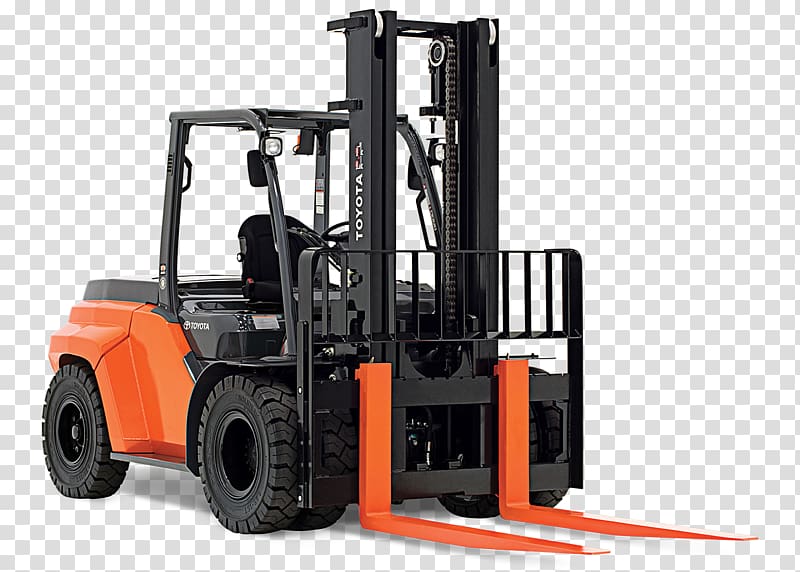Rev Up Your Efficiency: Mastering Toyota Forklift Service and Repair
Rev Up Your Efficiency: Mastering Toyota Forklift Service and Repair
Blog Article

When it comes to maximizing productivity in any warehouse or manufacturing environment, having reliable equipment is crucial. Toyota forklifts have long been recognized for their durability and efficiency, making them a top choice for businesses worldwide. However, like any piece of machinery, they require proper service and repair to maintain peak performance. Understanding the fundamentals of Toyota forklift service repair can significantly enhance the lifespan of your equipment, reduce downtime, and ultimately improve your operational efficiency.
In this article, we will explore essential tips and best practices for mastering Toyota forklift service and repair. You'll learn about common maintenance tasks, troubleshooting techniques, and the importance of regular servicing to prevent costly breakdowns. By investing time in the upkeep of your Toyota forklifts, you can ensure they remain in optimal working condition, helping your business thrive in a competitive landscape.
Understanding Toyota Forklift Systems
Toyota forklifts are engineered with a range of sophisticated systems that enhance their performance and efficiency. These systems include the powertrain, hydraulic components, and the electrical system, all of which work in harmony to ensure the smooth operation of the forklift. Understanding these systems is crucial for effective service and repair, as it allows technicians to diagnose issues accurately and implement the right solutions promptly.
The powertrain system is the heart of the forklift, comprising the engine and transmission. A well-maintained powertrain ensures optimal performance, fuel efficiency, and adherence to safety standards. Regular servicing of the engine and transmission can prevent common problems, keeping the forklift running smoothly and reducing downtime. Familiarity with the specific powertrain components of Toyota forklifts also helps in identifying potential wear and tear during routine inspections.
Hydraulics play a vital role in a forklift's functionality, controlling the lifting and lowering actions of the forks. Toyota's hydraulic systems are designed for durability and efficiency, featuring high-quality pumps and cylinders. Regular checks of hydraulic fluid levels and the condition of hoses are essential to prevent leaks and failures. Understanding the hydraulic system's operation and maintenance requirements will significantly contribute to the reliability and longevity of the forklift.
Essential Maintenance Practices
Regular maintenance is crucial for keeping your Toyota forklift in optimal condition. One of the most important practices is to conduct daily inspections before usage. Check for any signs of wear or damage, including the tires, forks, and hydraulic systems. Ensure that all fluid levels, such as oil and hydraulic fluid, are adequate. Addressing minor issues early can prevent them from developing into major problems that could lead to costly repairs.
Another key aspect of Toyota forklift service repair is scheduled routine maintenance. Adhering to the manufacturer's maintenance schedule helps maintain the forklift's performance and extends its lifespan. This includes regular oil changes, filter replacements, and brake inspections. By following these guidelines, operators can ensure that their forklifts operate efficiently and safely, reducing downtime and increasing productivity.
Finally, keeping thorough maintenance records is essential for effective Toyota forklift service repair. Documenting all service activities, repairs, and inspections allows for better tracking of the forklift's health over time. This information can be invaluable for diagnosing issues, planning future maintenance, and ensuring compliance with any regulatory requirements. Proper record-keeping also helps in assessing the overall performance and reliability of the forklift, contributing to more informed decision-making regarding repairs and service.
Common Repair Issues and Solutions
One of the most frequent issues with Toyota forklifts is hydraulic system failure. This can manifest as slow or unresponsive lift functions. The first step in addressing this problem is to check the hydraulic fluid levels and inspect for any leaks in the hoses or connections. If the fluid is low, top it up with the manufacturer-recommended hydraulic oil. If leaks are found, they must be repaired or the damaged components replaced to restore proper function.
Another common problem is battery failure, especially in electric models. Symptoms include insufficient power to lift loads or difficulty in starting the forklift. To troubleshoot, check the battery charge and connections for corrosion or looseness. Regular maintenance, such as cleaning terminals and ensuring proper water levels in maintenance-free batteries, can prevent this issue. If the battery is old or no longer holds a charge, replacement may be necessary to ensure reliable operation.
Lastly, tire wear or damage can lead to reduced stability and safety while operating the forklift. Inspecting tires for excessive wear, cuts, or punctures should be part of routine checks. If the tread is worn down or the tires are damaged, they should be replaced with the correct type specified by Toyota. Maintaining proper tire pressure is also essential, as it directly affects handling and safety during operation.
When to Seek Professional Help
Toyota Forklift Service Repair Manual PDF Download
Recognizing when to seek professional help for your Toyota forklift service repair is crucial for maintaining efficiency and safety. If you notice persistent issues such as unusual noises, fluid leaks, or fluctuating performance, it’s essential to consult a qualified technician. Ignoring these signs can lead to more extensive damage and costly repairs, potentially causing downtime in your operations.
Another important factor is the complexity of the repairs needed. While routine maintenance tasks like tire changes or fluid checks can often be handled in-house, more intricate repairs involving the electrical or hydraulic systems should be left to professionals. Their expertise ensures that repairs meet safety standards and that the forklift operates reliably after service, ultimately contributing to your overall operational efficiency.
Lastly, if you are unsure about the specific problem or lack the proper tools and diagnostic equipment, it is best to reach out to a professional service. Attempting to fix issues without adequate knowledge or resources can not only worsen the problem but also pose safety risks to operators and those nearby. Keeping your Toyota forklift in optimal condition is essential, and sometimes professional intervention is the best way to achieve that.
Report this page